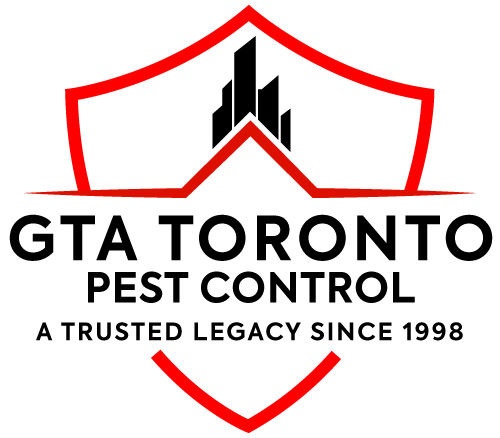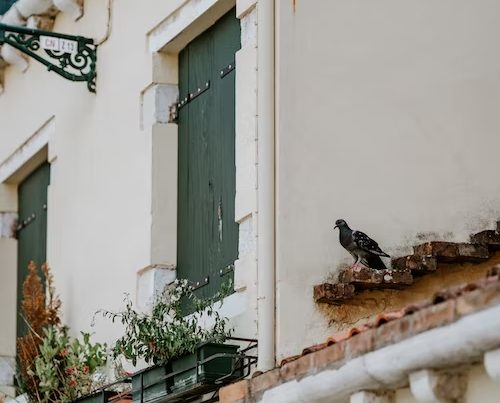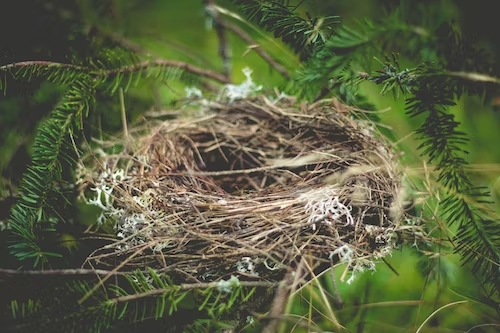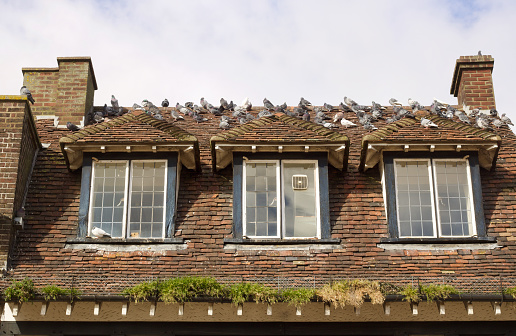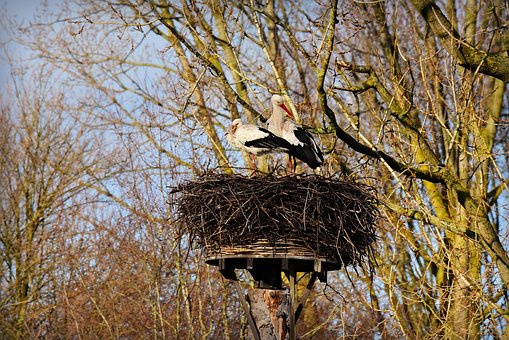
Determine whether the disturbance is legal under local, regional, and national wildlife laws before irradicating, altering, or interfering with any bird nest in some way or the other. Most birds are protected, and tampering with or removing a nest or eggs can result in large fines or other penalties. It is certainly illegal to remove or destroy any active nest from a native bird species, which is defined as a nest with eggs or brooding adults. If the nest has been abandoned or there have been no eggs laid, it can be removed or destroyed as needed. However, nests of invasive birds such as house sparrows and European starlings are not protected at any time. Laws in other countries may differ, so it is best to properly identify the bird species and learn how local laws may apply to your actions before interfering with any nest.
There are laws in Ontario and across Canada that govern birds and their nests. Many bird species are federally protected, and homeowners are prohibited from removing nests themselves. If a nest or the birds are causing damage to their property, homeowners must seek permission. Working with a licenced wildlife control company can assist homeowners in dealing with these issues without violating federal laws.

The Ethical and Legal Procedure
The majority of birds, nests, and eggs are legally protected. Some of these laws are provincial in nature, while others are federal in nature. Different rules apply depending on the type of bird. Before you remove or disturb a wild bird’s nest or eggs in a nest, you may need permission from different institutes.
This includes the following:
• bird nesting sites (with or without eggs in them)
• non-used nests of certain species outside of the nesting season
• In some cases, additional approvals may be required (such as from the federal government in the case of migratory birds).
According to Fish and Wildlife Conservation Act, there is no need for permission if you are:
• carrying out a renewable energy project under the Environmental Protection Act or forest operations following an approved forest management plan; each activity has its process and requirements for protecting identified nests.
• performing maintenance on an electricity transmission or distribution line, a telecommunications line, or a broadcast station where there is a rapid danger to the line’s or tower’s function
causing harm to or removing the nests or eggs of:
Crows in America
cowbird with a brown head
The common grackle
the house sparrow
blackbird with red wings
Starlings from Europe

Precautionary Measures
You can remove the nest once you have thoroughly identified the bird species, confirmed it is legal to remove the nest, and ensured the nest is inactive and no eggs are present. Other pests and residual bird feces that can contain dangerous pathogens for humans are found in bird nests.
One should wear long sleeves, long pants, latex gloves, and a respiratory mask to protect yourself. Scrutinize the nest to ensure that it is free of eggs and birds. Apply an antibacterial spray to the nest. When the nest is dry, remove it and dispose of it in a tightly sealed container or an exterior trash bag. Throw it away from the house in the trash. Use a strong disinfectant to clean the area where the nest was. Remove and discard your gloves. Remove your clothing and immediately wash it in hot water.
Thoroughly wash your hands.
Take Expert’s Help
It can be daunting to determine whether or not removing a bird’s nest in or on your home is legal and the best way to do so. Contact a professional wildlife exclusion company if you have a bird nest that is causing problems on or on your property. They can identify the species of bird you have, remove or dispose of the nest, and help you identify areas where nesting could be a future issue.
